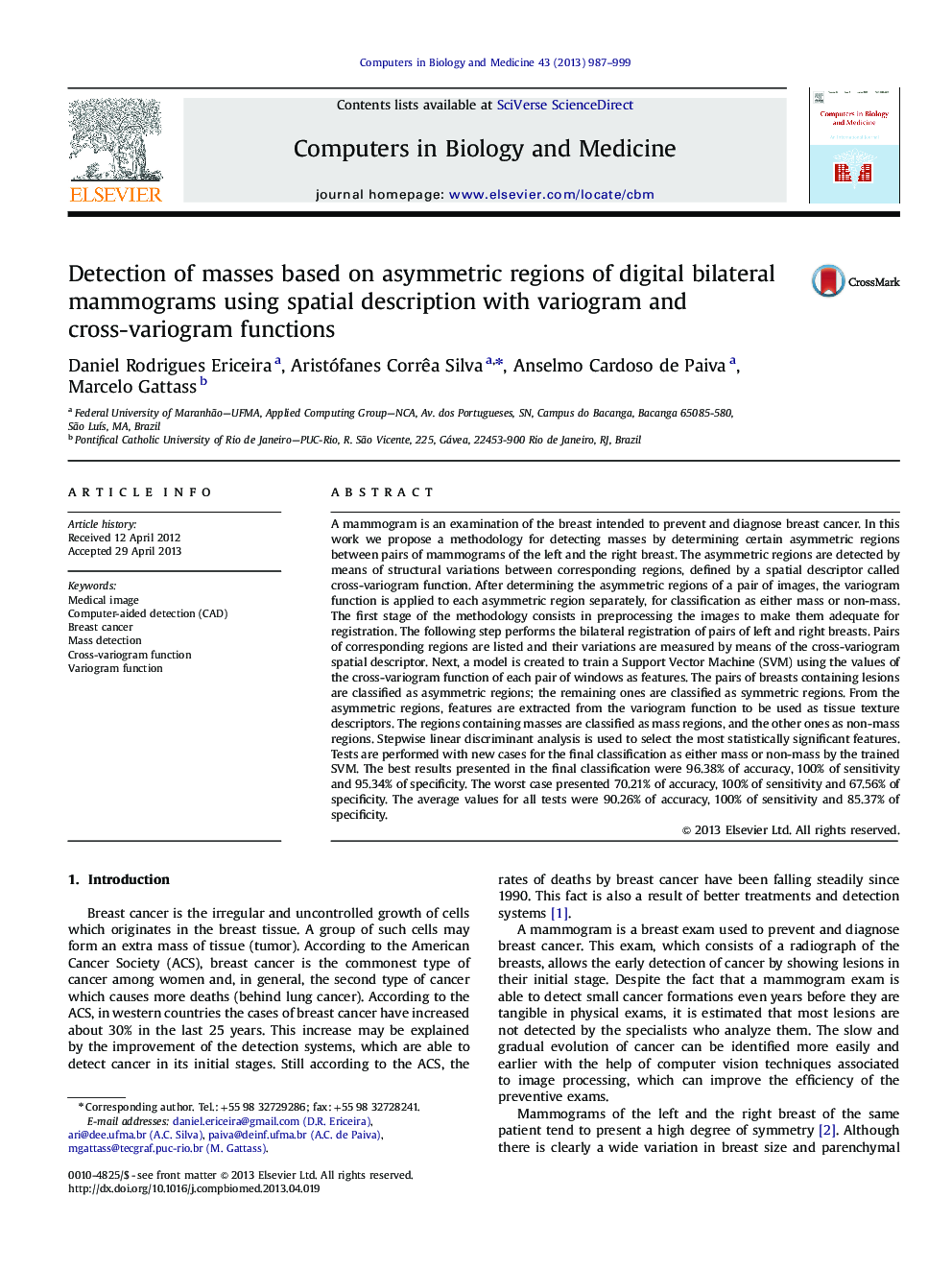| کد مقاله | کد نشریه | سال انتشار | مقاله انگلیسی | نسخه تمام متن |
|---|---|---|---|---|
| 10351520 | 864475 | 2013 | 13 صفحه PDF | دانلود رایگان |
عنوان انگلیسی مقاله ISI
Detection of masses based on asymmetric regions of digital bilateral mammograms using spatial description with variogram and cross-variogram functions
ترجمه فارسی عنوان
تشخیص توده ها براساس مناطق نامتقارن ماموگرام دوجانبی دیجیتال با استفاده از توصیف فضایی با واریوگرام و توابع متقابل وریوگرام
دانلود مقاله + سفارش ترجمه
دانلود مقاله ISI انگلیسی
رایگان برای ایرانیان
کلمات کلیدی
موضوعات مرتبط
مهندسی و علوم پایه
مهندسی کامپیوتر
نرم افزارهای علوم کامپیوتر
چکیده انگلیسی
A mammogram is an examination of the breast intended to prevent and diagnose breast cancer. In this work we propose a methodology for detecting masses by determining certain asymmetric regions between pairs of mammograms of the left and the right breast. The asymmetric regions are detected by means of structural variations between corresponding regions, defined by a spatial descriptor called cross-variogram function. After determining the asymmetric regions of a pair of images, the variogram function is applied to each asymmetric region separately, for classification as either mass or non-mass. The first stage of the methodology consists in preprocessing the images to make them adequate for registration. The following step performs the bilateral registration of pairs of left and right breasts. Pairs of corresponding regions are listed and their variations are measured by means of the cross-variogram spatial descriptor. Next, a model is created to train a Support Vector Machine (SVM) using the values of the cross-variogram function of each pair of windows as features. The pairs of breasts containing lesions are classified as asymmetric regions; the remaining ones are classified as symmetric regions. From the asymmetric regions, features are extracted from the variogram function to be used as tissue texture descriptors. The regions containing masses are classified as mass regions, and the other ones as non-mass regions. Stepwise linear discriminant analysis is used to select the most statistically significant features. Tests are performed with new cases for the final classification as either mass or non-mass by the trained SVM. The best results presented in the final classification were 96.38% of accuracy, 100% of sensitivity and 95.34% of specificity. The worst case presented 70.21% of accuracy, 100% of sensitivity and 67.56% of specificity. The average values for all tests were 90.26% of accuracy, 100% of sensitivity and 85.37% of specificity.
ناشر
Database: Elsevier - ScienceDirect (ساینس دایرکت)
Journal: Computers in Biology and Medicine - Volume 43, Issue 8, 1 September 2013, Pages 987-999
Journal: Computers in Biology and Medicine - Volume 43, Issue 8, 1 September 2013, Pages 987-999
نویسندگان
Daniel Rodrigues Ericeira, Aristófanes Corrêa Silva, Anselmo Cardoso de Paiva, Marcelo Gattass,
